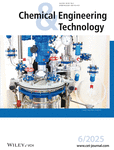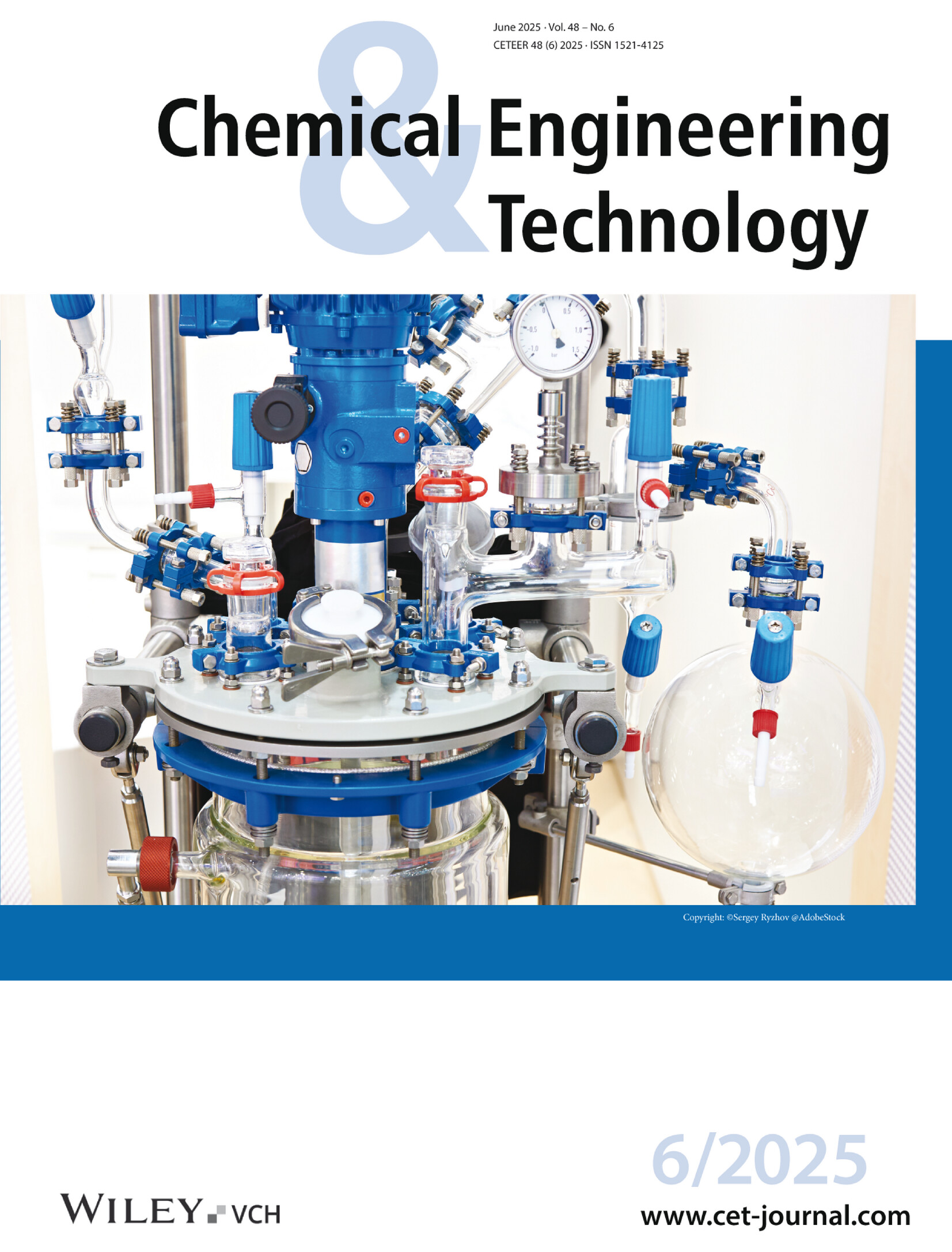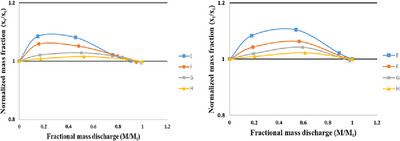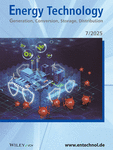Journal list menu
Export Citations
Download PDFs
Cover Image
Issue Information
Research Article
Drying Rate Prediction for Droplets under Combined Convection and Infrared Radiation Drying
- First Published: 19 May 2025
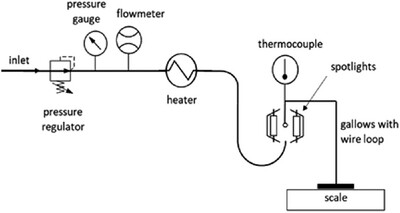
Combined convection and radiation drying increases process efficiency and scope. Experiments regarding the influence of convective airflow temperature and radiative power on the mass reduction rate in first-phase drying were performed. A model was developed for the drying rate prediction in 20 µL water droplets and transferred to a polymer solution.
Energy Requirements for Sustainable Olefin Production From CO2 via Electro- or Thermal Catalysis
- First Published: 13 May 2025
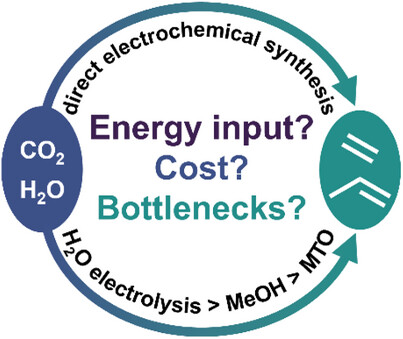
This study compares two pathways for sustainable olefin production: direct electrochemical CO2 reduction and water electrolysis followed by CO2 hydrogenation to methanol and conversion to olefins. We analyze energy efficiency and costs, identifying bottlenecks. Direct CO2 reduction demands better cell potential and faradaic efficiency, while methanol conversion suffers from high overpotentials and olefin selectivity issues.
Optimal Conditions Linked to the Reducing Agent on the Role of Morphology of Silver Nanoparticles
- First Published: 05 May 2025
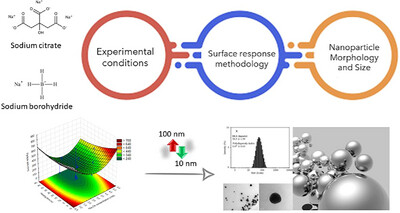
Thus, the relevance of the present work is the prediction and control of the nanometric particle size range, which is necessary for an efficient silver nanoparticle application in different technological fields. Besides, this work demonstrated how to determine the operating conditions to minimize or maximize the size of the nanoparticles to attend to a specific application, for example.
Experimental and Modeling of Sulfonation of Styrene-Based Resins Crosslinked With DVB and TMPTA
- First Published: 13 May 2025
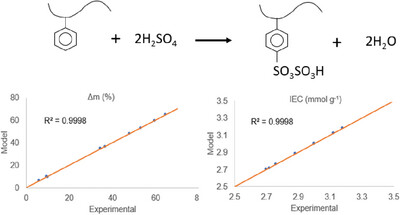
This study explores how reaction conditions influence the performance of sulfonated styrene resins cross-linked with DVB and TMPTA. Results show that tuning parameters like temperature and solvent swelling significantly enhances sulfonic group incorporation, especially in TMPTA-based resins. Modeling reveals key structural differences and insights into degradation kinetics.
An Electrochemical Detection of Malathion Pesticide Using Cu Electrode and Enhanced by Machine Learning
- First Published: 25 May 2025
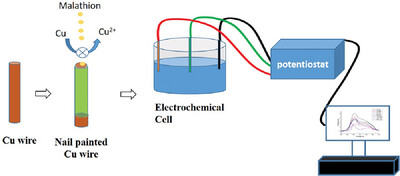
The detection and quantification of malathion, an organophosphate pesticide, in water and food samples were performed using a Cu electrode, based on current inhibition ratio measurements. The calibration curve was validated with three spiked samples. Additionally, machine learning algorithms were applied to electrochemical sensor data to predict unknown concentrations effectively.
Modified Fractional-Order PID Controller Design for the Mixing Tank Process
- First Published: 05 May 2025
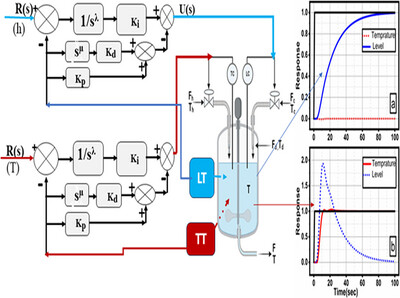
A modified fractional-order PID controller is designed for a multivariable mixing tank system. Relative gain array analysis and simplified decoupler design are employed to reduce loop interactions. The proposed MFOPID controller achieves superior response with minimal control effort validating its efficacy particularly, for slow dynamic processes.
An Investigation of the Flow Behavior of Microcrystalline Cellulose Powders from Pyramidal Silos
- First Published: 04 May 2025
Corrosion Inhibition of Mild Steel Using Azadirachta indica Leaf Extract in an Alkaline Medium Containing Cl− Ions
- First Published: 14 April 2025

Mild steel corrosion is a significant challenge in process industries, particularly in environments containing chloride and alkaline conditions. This study investigates neem leaf extract as a viable green corrosion inhibitor for mitigating mild steel corrosion in an alkaline environment with chloride ions. Various studies confirm its effectiveness with inhibition efficiency reaching ∼78%.
Process Hazard Analysis and Safe Process Design for Solid Propellant Mixers
- First Published: 13 May 2025
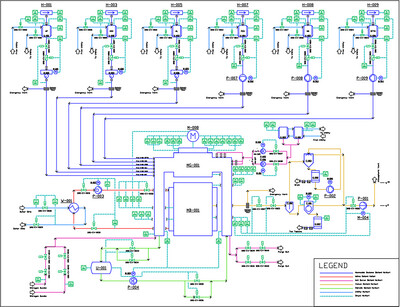
A combination of risk analysis methods were applied. At fist, PSI documents were created. Then, a Semi-Quantitative HAZOP was conducted to identify potential hazards. FTA was used to make meaningful and quantify the results obtained from the scenarios. In final, a conceptual system was designed with active, passive, procedural and inherently safe design recommendations for safe mixer design.
Study on the Preparation of Paraffin/Melamine Microcapsules for TBPB Reaction Thermal Control
- First Published: 05 May 2025
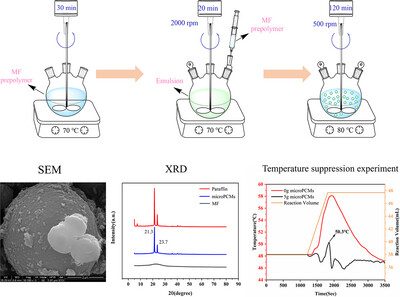
This study demonstrates the preparation of paraffin/melamine-formaldehyde resin microPCMs via in situ polymerization for thermal control in TBPB synthesis. Under optimized conditions, microcapsules achieved 62.5% encapsulation rate. Adding 5 g microPCMs at 50 °C reduced peak reaction temperature from 58.3 °C to 50.3 °C, effectively suppressing thermal runaway. The results highlight the potential of phase change microcapsules in enhancing safety for semi-batch chemical processes through targeted temperature regulation.
Ethanol Antisolvent Effects on Solid–Liquid Equilibrium and Nucleation of Ammonium Magnesium Sulfate Hexahydrate
- First Published: 13 May 2025
Review Article
Digital Planning Support for Modular Logistics Plants in the Process Industry
- First Published: 21 April 2025
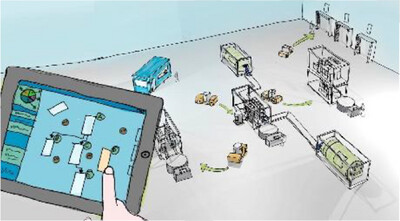
How can logistics in the process industry keep pace with increasing market volatility and product diversity? This article presents a novel, simulation-driven planning approach and digital support system for modular logistics plants—enabling virtual scenario analysis, rapid decision-making before real-system implementation, and significantly reduced planning times in dynamic environments.




